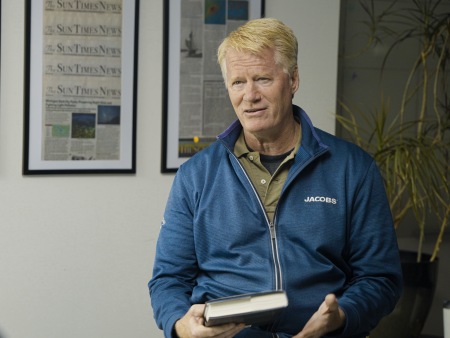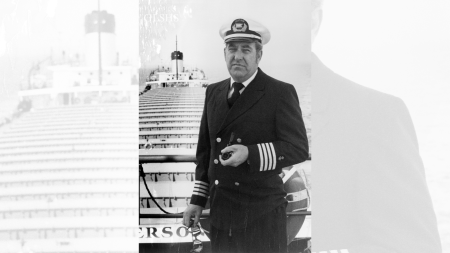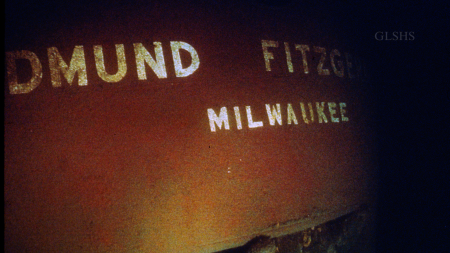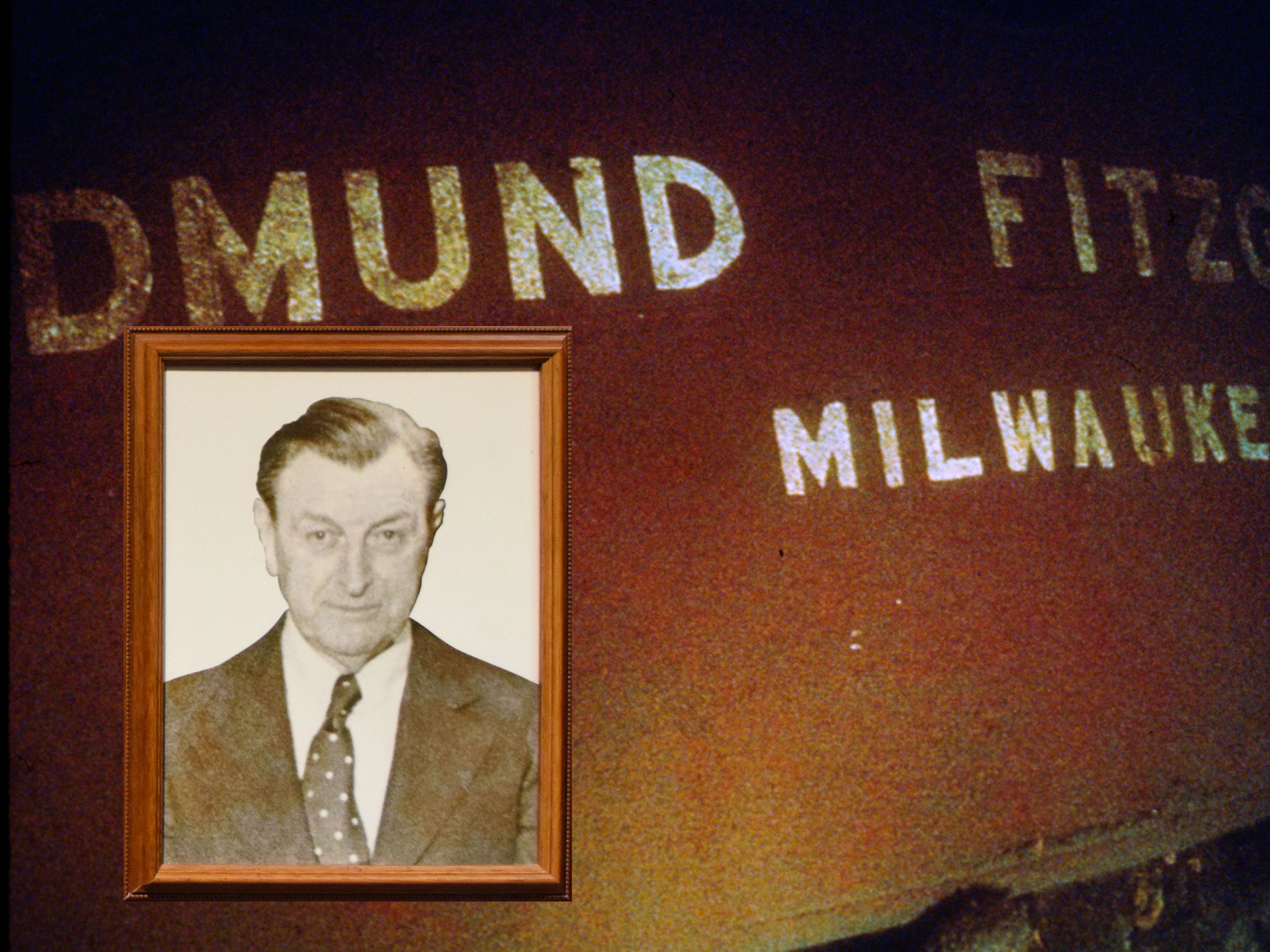As the 50th anniversary of the Edmund Fitzgerald’s sinking approaches, John U. Bacon’s new book revisits Captain Ernest McSorley and the tragedy that claimed 29 lives.
By Doug Marrin
On November 10, 1975, the Edmund Fitzgerald sank in Lake Superior in a powerful storm, taking with it 29 men and cementing its place in Great Lakes history. At the helm was Captain Ernest McSorley, a man whose reputation and career are at the center of John U. Bacon’s new book, The Gales of November, released on October 7.
Bacon portrays McSorley as a complicated but admired figure. “Very positive,” Bacon said when asked his opinion of the captain in a recent interview with the Sun Times News. “Now, I know he made some crucial mistakes that night. There’s no question. But he was, without question, the best captain on the Great Lakes. Even his rivals told me this.”

From Deckhand to Master
Born in Spencerville, Ontario, in 1912, McSorley’s family later moved to Ogdensburg, New York, where he caught “the boat bug” along the St. Lawrence Seaway. He started as a deckhand in 1930 and by age 31 became the youngest master on the Great Lakes, captaining the SS Carrollton. Over the years, he would command eight more ships, rising steadily until 1972, when Columbia Transportation tapped him to take over the Edmund Fitzgerald.
By then, McSorley was widely considered the best. “One of the guys on the ship with him three years earlier said that man could take 729 feet of iron and park between two other ships within five feet, like you’re backing up a pickup truck. This guy was the best,” Bacon recalled.

Reputation Built on Skill and Nerve
McSorley’s reputation was not based on theatrics but on skill and nerve. “He was also the most aggressive. And your strength can be your weakness,” Bacon said. “So, he would never turn around, no matter how bad the storm. He’d just go, go, go, and usually, full blast.”
That reputation, however, contrasted with some of his decisions the night the Fitzgerald went down. “Tragically, two of his mistakes were two of his very rare cautious moves,” Bacon explained. “This guy’s not a cautious guy, but that night, he went the northern route down Lake Superior, the northern way, instead of going straight across. That was to avoid the storm. Basically, it’s a very cautious move, adding 14 hours to the trip.”

A Cautious Move May Have Imperiled the Freighter
Bacon noted that McSorley may not have been as familiar with the northern route, particularly near Caribou Island. Ironically, McSorley’s choice to take the northern route, a rare cautious move intended to skirt the worst of the storm, may have put the Fitzgerald in greater danger. “One theory is that they bottomed out in 11 feet of water somewhere near that island. That’s possible,” Bacon said.
North of Caribou Island lies Six Fathom Shoal, a shallow reef where the water is only about 11 feet deep. For a 729-foot freighter like the Edmund Fitzgerald, heavily loaded with iron ore, even brushing the lakebed could tear open the hull or weaken the ship’s structure. Some researchers believe Captain McSorley’s decision to take the northern route, usually a cautious detour to avoid the storm, may have steered the vessel too close to this shoal. If the ship “bottomed out” there, it could explain the sudden flooding that overwhelmed it later and ultimately led to its loss.
In shipping terms, bottoming out is when a vessel’s hull scrapes or strikes the lakebed in shallow water. Even a brief contact can tear open a ship’s bottom plates or weaken its structure, allowing water to enter the holds. For a heavily loaded freighter like the Fitzgerald, carrying over 26,000 tons of iron ore pellets, the risk was severe.

Loyalty of His Crew
Despite the risks, McSorley’s crew stood firmly behind him. “His crew loved him. He was very popular. He was very stern but fair, and the loyalty his crew felt for him was absolute, and very, very few captains had that,” Bacon said.
Bacon’s book also highlights McSorley’s balance of toughness and compassion. Stories from the early 1970s recall him bending company rules to ensure a young cadet didn’t miss the ship’s departure, or giving his crew time with family while unloading in port. These actions, while unconventional, underscored his reputation as both a demanding and caring leader.

The Final Voyage
The tragedy of McSorley’s story, Bacon emphasizes, is that the fatal voyage was to be his last before retirement. “He was on his last trip before retirement. His wife was waiting for him. He had tacked on this one last trip to pay for his wife’s medical bills,” Bacon revealed.

A Captain Remembered
Nearly fifty years after the Fitzgerald went down, Ernest McSorley remains a central figure in its story. Bacon’s The Gales of November brings him to life not only as the ship’s final captain but as one of the most skilled and respected mariners to sail the Great Lakes.
The book, released on October 7, offers new insights into the man behind the legend and the storm that sealed his fate.




 8123 Main St Suite 200 Dexter, MI 48130
8123 Main St Suite 200 Dexter, MI 48130


